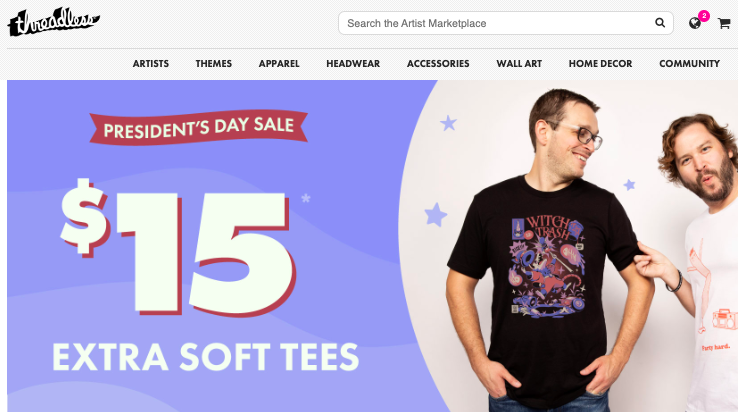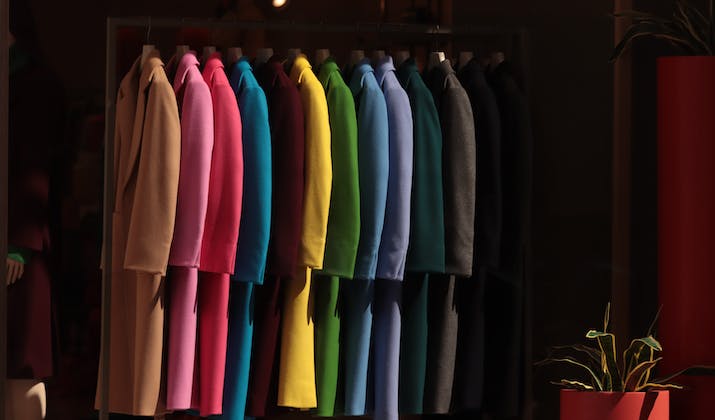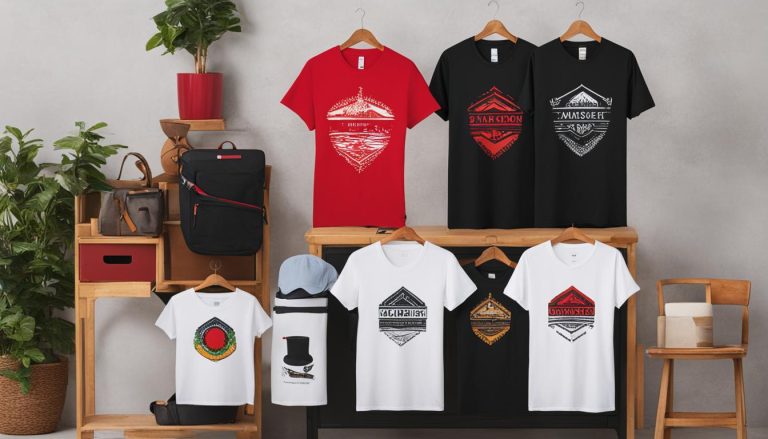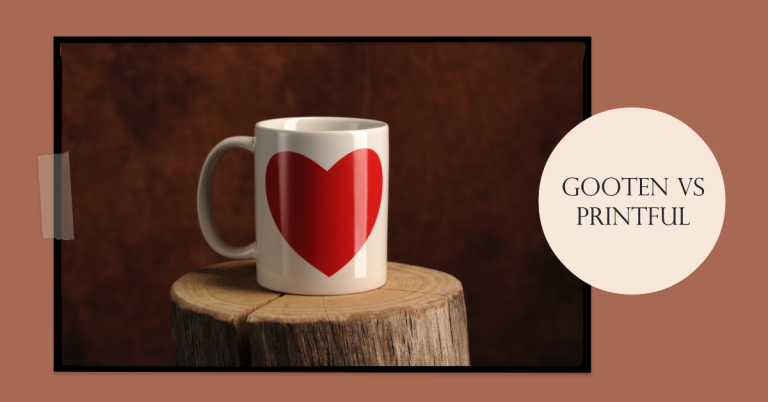If you’re a creator looking to sell your designs, choosing the right platform is crucial.
But, have you ever wondered which platform stands out when it comes to services, product quality, and community engagement?
With so many options available, it can be challenging to determine which platform best suits your needs. That’s why we’re here to help. In this article, we compare two popular platforms, Threadless and Fourthwall, to help you make an informed decision.
Is Threadless the clear winner, or does Fourthwall have something unique to offer?
Let’s dive in and find out.
Threadless vs Fourthwall – Overview
Fourthwall
Fourthwall is a platform that helps creators open shops, offer memberships, and engage supporters.
It provides an all-in-one homebase for creators to launch an elevated high-quality product line that fits their brand. Fourthwall supports many free integrations and offers personalized “thank you” videos, integrations, custom promo codes, and more to reward supporters and build hype.
It also handles customer support and helps creators chart a path to reach their goals. Fourthwall is focused on giving creators an exceptional support experience and product experience.
It works with manufacturing and fulfillment partners around the globe to offer low-cost, fast shipping to fans. There are no monthly fees, no upfront costs, and no contracts to use Fourthwall, and creators set their own margins.
Threadless
Threadless is an online community and e-commerce website specializing in apparel, prints, phone cases, shoes, bags, and notebooks designed by artists and voted upon by the community.
Founded in 2000, Threadless operates under the principle of co-design, allowing customers to submit designs that are then voted on weekly.
About 1,000 designs are considered per week, and approximately 10 winning designs are produced and sold globally via the Threadless website and its retail store in Chicago.
Artists earn royalties based on net profits from their designs, receiving 20% of revenue plus additional incentives. Threadless utilizes screen printing for its T-shirts and maintains forums for discussions among designers.
Threadless should not be confused with Threadless Jewelry, which refers to a specific style of body jewelry featuring flatback posts or central posts without internal threads, providing a smoother installation and less irritation compared to traditional threaded jewelry.
Threadless vs Fourthwall – Features
Threadless
The key features offered by Threadless include:
- Screen printing: Threadless utilizes screen printing for its T-shirts and maintains forums for discussions among designers.
- Artist Shops: Threadless allows artists to sell their work, even if it is not selected for printing initially. It also allows Threadless to target niche markets similar to companies like Redbubble.
- Forums: Threadless has forums for a variety of topics which include artist shops, tips and tricks, arts and design, and projects. The forums are focused on designers who want to get feedback on their designs, or ones who need help with the whole process.
- Printing techniques: Most Threadless T-shirts are printed using the screen printing technique.
- Challenges: Threadless has challenges where users can gain an extra cash reward in addition to the normal cut of product sales. This allows Threadless to have some control over the products they produce, while still having the content come from the community.
Fourthwall
Here are the features of Fourthwall
- Customer support: Fourthwall handles customer support and helps creators chart a path to reach their goals.
- Free integrations: Fourthwall supports many free integrations, including personalized thank you videos, YouTube Product Shelf, Twitch Product and Memberships Gifting, StreamElements and Streamlabs stream alerts, Facebook and Instagram Shopping, Members-only Discord server, TikTok feeds, and many more.
- Low-cost, fast shipping: Fourthwall works with manufacturing and fulfillment partners around the globe to offer low-cost, fast shipping to fans.
- No fees: There are no monthly fees, no upfront costs, and no contracts to use Fourthwall, and creators set their own margins.
- Customizable tiers: Fourthwall offers customizable tiers for memberships.
- Full brand control: Fourthwall gives creators full end-to-end control over the experience they offer their members, including custom domains and easy-to-use design tools.
- Members-only products: Fourthwall offers members-only products and discounts.
- Live giveaways: Fourthwall offers live giveaways of merch and memberships to build excitement around a creator’s brand and drive up to 30% additional revenue.
- Twitch subscriber discounts: Fourthwall offers Twitch subscriber discounts, which incentivize higher tier subscribers to move their support over to Fourthwall. Here, creators keep 95% of their income, versus 70% on Twitch.
- Lower fees: Fourthwall offers lower fees than its competitors, including Patreon and Ko-fi.
- Seamless integration: Fourthwall connects a creator’s shop to their memberships in one experience, allowing them to seamlessly promote their memberships to supporters visiting their shop.
Threadless vs Fourthwall – Cons
While both these platforms offer several useful features, they have their own negatives. Let’s take a look at their cons.
Threadless
- Competitive Selection Process: Threadless operates on a competitive selection process, where only a small percentage of submitted designs are chosen for production. This can lead to disappointment for artists whose designs are not selected.
- Limited Artist Control: While Threadless allows artists to submit designs, the selection process and the types of products that can be printed are ultimately controlled by the company. This may limit the creative control that artists have over their work.
- Royalty Structure: Although Threadless offers artists royalties based on net profits from their designs, the 20% royalty rate may be perceived as low by some artists, especially considering the competitive nature of the selection process.
Fourthwall
- Platform Exclusivity: Fourthwall’s benefits, such as Twitch subscriber discounts and personalized integrations, are exclusive to the platform. This may limit the flexibility for creators who want to offer similar benefits on other platforms or their own websites.
- Transition Risks: While Fourthwall offers features to help creators transition to its platform, such as limited-time promotional offers and strategies for de-risking the transition, switching to a new platform involves potential disruption to existing membership bases and revenue streams.
- Membership Fees: Fourthwall charges a 5% flat fee for memberships, which may be perceived as a drawback compared to platforms that offer memberships without additional fees.
These cons should be considered in the context of each platform’s specific offerings and the needs of individual creators.
Threadless vs Fourthwall – Pricing & Shipping
Fourthwall
- Products from Catalog: No extra percentages/margins; creators keep the entire difference between the product cost and the sale price
- Self-Sourced Products: No fees
- Digital Products: 3% flat fee
- Memberships: 5% flat fee
- Shipping: Dynamically determined by the size of package and destination; works with most major carriers and passes through the true cost of shipping
In addition to the above pricing structure, Fourthwall includes a 2.9% + $0.30 payment processing fee, which is standard across various e-commerce platforms.
Creators set their own margins when using Fourthwall, and there are no monthly fees, upfront costs, or contractual obligations required to use the service.
Threadless
Threadless does not explicitly detail pricing structures on its main website. However, according to third-party sources, Threadless typically pays artists royalties based on net profits from their designs, keeping 20% of revenue plus additional incentives.
Threadless ships internationally, and shipping times vary depending on location. In the United States, shipping usually takes 3–5 business days, whereas international shipping can take longer due to customs processes.
Please note that the details presented here are accurate as of the last update, but they may change over time. Always check the latest information on the respective websites for the most current pricing and shipping options.
Conclusion
It is difficult to determine which platform is better, as both Fourthwall and Threadless offer unique features and benefits that may appeal to different creators
Ultimately, the choice between Fourthwall and Threadless will depend on the specific needs and preferences of individual creators.
It may be helpful to consider factors such as pricing, shipping, and features, as well as the overall user experience and support offered by each platform.











